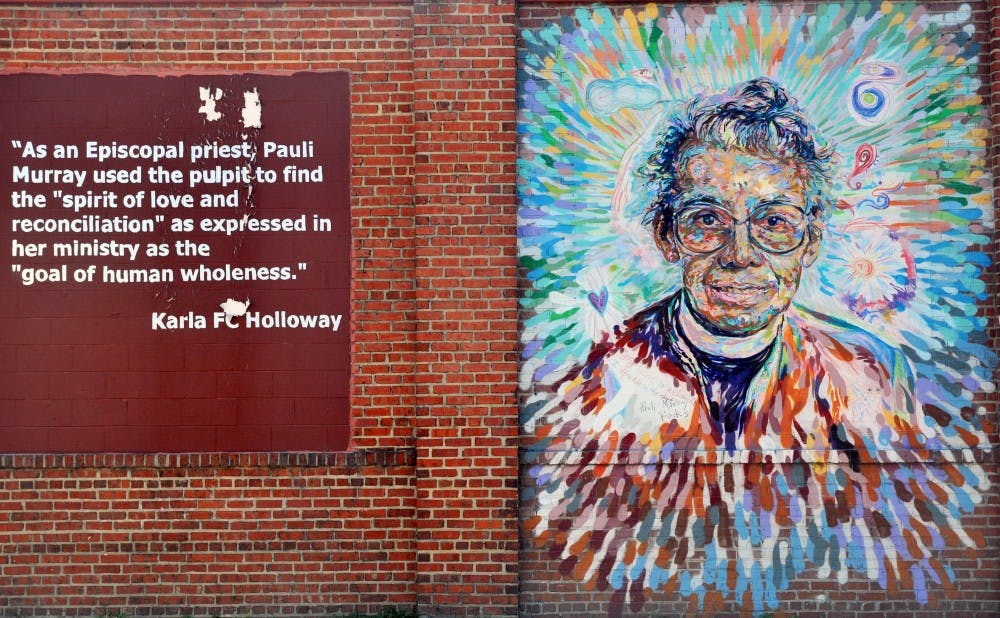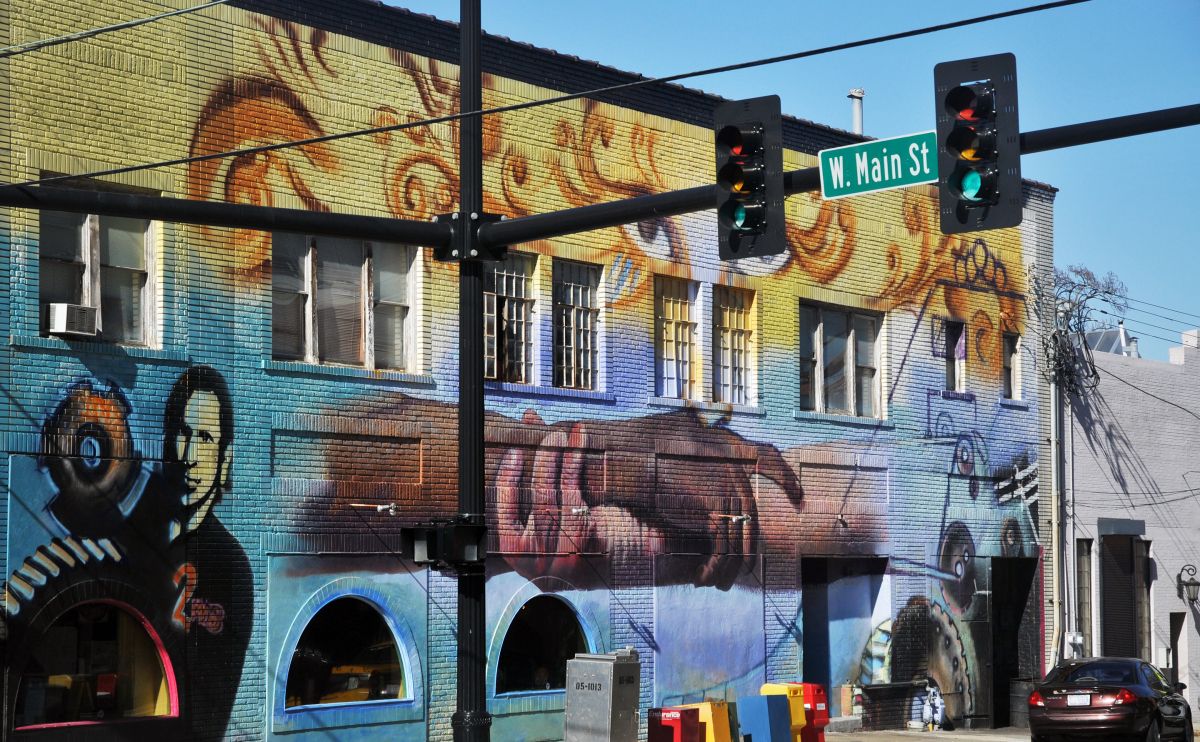My earliest memory is of my first encounter with a Monet. I was barely three at the time. It was a rainy Sunday when my mother caught me finger painting with ketchup on her fancy silk drapes. After a necessary scolding, we were on our way to the Wadsworth Atheneum, the oldest public art museum in the country and also Hartford, Conn.’s only interesting attraction. My mother insisted on nurturing my newfound artistic inclination in a more civilized manner—and what could be more civilized than 19th century French impressionism?
The exhibit was of Monet’s Nymphéas series and was absolutely captivating. The Wadsworth’s stark marble atrium suddenly had windows into an immaculate French garden where pastel lilies wore lime tutus as they twirled through swirling seas of azure and indigo. Feathery strokes of cotton candy danced with dense dabs of lavender and hydrangea in a gentle mint breeze.
“Aren’t they magical? And no drapes were harmed in the process,” my mother giggled. With that, we left the museum in search of chocolate croissants and some washable paints.
My appreciation for art extends beyond Monet and French impressionism. Many credit the early impressionists for truly revolutionizing artistic perceptions and techniques, and I couldn’t agree more. While their sloppy brushstrokes and profound use of color ignited fierce criticism and opposition, the impressionists eventually earned recognition for their “depiction of contemporary subject matter in a suitably innovative style,” as described in Edmond Duranty’s 1876 essay, La Nouvelle Peinture. As the artistic movement expanded, the impressionists paved the way for more radical movements. Cubism, fauvism, surrealism and abstract expressionism have always been my favorites.
Perhaps I prefer these art movements because I relate to their imperfections. After that fateful day at the Wadsworth Atheneum, my parents enrolled me in painting lessons. These lessons were fun but far too structured for my unique artistic desires. I vividly recall one class on flowers. First, we learned to draw simple daisies; I failed immediately. I quickly hated painting because nothing I created looked realistic. This trend continued until I was about 13, when my mother took me to yet another Wadsworth exhibit.
This one, of Dutch American abstract expressionist Willem de Kooning, was dreamy and surreal. His complex pieces were massive displays of bright colors and puzzling ambiguity; I fell in love. I soon realized that I, too, contribute to this post-impressionism revolution.
***
During my semester in Paris, I took a wrong turn while jogging and stumbled upon the Rue Dénoyez, one of the most graffitied streets in Paris. Parisian public art takes on many forms, from the lush Luxembourg Gardens to the striking Eiffel Tower to the countless graffiti masterpieces, but this street in Paris’s Belleville neighborhood boasted the most spectacular street art I had ever seen.
I had never seen so much graffiti before, and the organized chaos of the different works reminded me of my love for art. As I meandered past numerous bohemian cafés and intimidatingly stylish young couples, I observed several unassuming artists at work. The masterpieces were vivid, expressive and gorgeous—yet often bittersweet. Many walls were covered with images evocative of political unrest, poverty and racism. A nearby wall held the phrase “le bonheur est trop court,” happiness is too short, while a commanding overhead billboard read “il faut se méfier des mots,” beware of words.
Belleville’s public art encouraged me to investigate the motivations behind such bittersweet graffiti. I learned that Belleville and its bordering suburbs have suffered as a result of French immigration and social policies. After Algeria gained its independence from France in 1962, France experienced a massive influx of North African immigrants. Many claim that the 1970s housing projects were erected to drive these immigrants to the outskirts of the city, where they wouldn’t be at risk of tainting the “real” Parisian culture.
I also witnessed quite a few artistic expressions of “l’affaire du voile,” the veil affair. Since 1989, the French “Laïcité,” or secularism law, has been manipulated to prevent Islamic females from wearing a traditional headscarf in many public places. As a result, hundreds of girls have been expelled from French schools for wearing the headscarf. While France is a secular nation, these policies inhibit religious freedom, personal expression and the right to education.
Fast-forward one year, and my newfound interest in the intersection of human rights and public art led me to the Duke Immerse program on human rights in the Americas. The program included a two-week trip to Chile, in addition to various excursions across North Carolina and community projects in Durham.
I remember the first day of class, when I quickly realized that I was one of the only students who didn’t speak Spanish. My classmates told inspiring testimonies of tumultuous journeys to America as an undocumented immigrant, life as a Tibetan refugee with no nationality and of personal ties with Latin America. Almost all of my classmates spoke of racial identity struggles, but I thought, “I’m white and I’ve never really questioned my identity. Does this make me shallow?”
Despite the language barrier and my mild identity crisis, Chile was incredible. Upon landing in Santiago, I discovered a vibrant, beautiful city. My favorite part of Santiago is, unsurprisingly, its public art. The graffiti is on par with that of Belleville in both aesthetics and content.
Santiago’s public art movement began when the multidisciplinary art collective, Colectivo Acciones de Arte, was founded in 1979. CADA used the city as an art medium for collective work. CADA founders highlighted the effects of the Pinochet dictatorship on the country, which homogenized the country’s social and political landscapes. In addition to the more than 30,000 people tortured, about 3,000 people died and another 1,000 are still missing. This fear repressed all traditional means of public political discourse, but CADA methods were extremely ambiguous and encouraged conversation and questioning without direct political statements.
***
My encounter with today’s Chilean public art began with a man named Andres, whom I met in a grungy Santiago bar. The bar, oddly called Harvard, was packed with quirky, suspicious-looking characters. Over a few watery pisco-and-cokes, Andres and I discussed his artistic motivations. A few years earlier, he was pursuing a psychology degree until economic hardships forced him to leave school. Andres explained his desire to support the education movement, but faced one problem: fear. During his first student protest, he said Santiago police attacked many students and provoked a stampede. Andres was trampled, suffered several broken ribs, and understandably vowed never again to attend a protest. As such, he supported the movement in a safer way, through art.
I never saw Andres’s works, but he described them as abstract, cheerful depictions of his hopes for Chile’s education system. Andres explained that many artists turn to Santiago’s streets because apartments are often cramped and gallery spaces expensive. He joked that the city’s formal museums are useless because the best exhibits are always open and always free.
My first realization upon returning to Durham was that it felt colorless. Just like Paris and Santiago, Durham is steeped in a history of racism, economic struggle and inequality. Why is it that Paris and Santiago are laden with impactful art, whereas it seems like Durham isn’t? Durham isn’t a cosmopolitan capital city, but it’s home to one of the best universities in the world and so, at a minimum, it’s a significant intellectual hub. In fact, most of Durham’s few—but exceptional—public art exhibitions were not created by individuals, but by institutions.
A great example of this is the Pauli Murray Project. In collaboration with the Duke Human Rights Center, the Pauli Murray Project is a community-based effort to commemorate and proliferate the goals and values of civil and human rights advocate Pauli Murray. The project has created murals throughout the city to honor Murray’s achievements. These murals are one of few formal reminders that issues like racism still exist in Durham.
Peter Coyle, Durham’s Cultural Master Plan Coordinator, described the complicated bureaucracy in place for evaluating and approving all of Durham’s public art projects. Even when the committee approves a public art project proposal, Durham residents have an opportunity for input. The committee holds public forums for these pieces and often, when residents live near the art’s proposed location, they tend to be especially invested in the decision.
In 2012, the Durham Public Art Committee awarded local artist, Brenda Miller Holmes, a grant for a public mural project on Durham’s civil rights history. While Miller Holmes has been planning this project since 2012, historic preservation regulations made it challenging for her to find a suitable location for the mural. The county approved plans Feb. 10 for the mural to be painted on the west wall of the Durham Convention Center. The location is awaiting approval by the city government as it is jointly owned by city and county.
Unfortunately, these complications are not surprising. Earlier in the semester, Duke Immerse partnered with the Two Way Bridges Program to create a public mural recognizing Durham’s undocumented population. Special events coordinator Miguel Rojas Sotelo described the dilemma as a challenge.
“Initial talks with Brightleaf Square building owners gave us hope to have the mural on Main Street,” Sotelo said. “Unfortunately, they [backed] out after learning of the topic.”
Another site, the sidewall of Francesca’s Dessert Caffe, was later secured, but the same process reoccurred. Conversations were not advancing for placing murals at Torero’s Mexican Restaurant, but when artists, students and community members approached the restaurant with materials ready, they accepted the proposal. By the following Monday, however, the management of Brightleaf Square argued that the mural’s content was political and inappropriate for the site. Although eventually the mural was finished, arguments and a series of administrative rules proved to be an obstacle for their work.
A vibrant public art scene is undoubtedly conducive to a community’s well-being. It gives a voice to the voiceless; it draws visitors to different parts of cities; it gets people talking. In fact, I am the perfect example of why public art is so important. If Belleville wasn’t plastered in such striking graffiti, I would be one more person living in ignorance. If I hadn’t bumped into Andres, I would certainly know much less about Chilean education reform.
Public art raises awareness on issues that are often ignored. Prior to Fall 2013, I knew little about Durham’s undocumented population. The mural controversy, however, shows that the issue is alive and heated. These human rights abuses are going to keep happening unless we do something—and what better way to start than with more public art?
Get The Chronicle straight to your inbox
Signup for our weekly newsletter. Cancel at any time.




